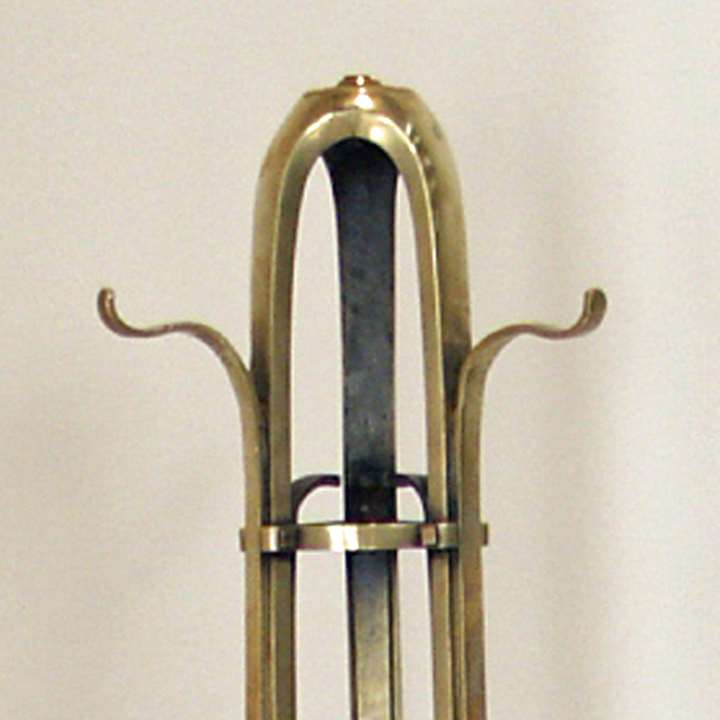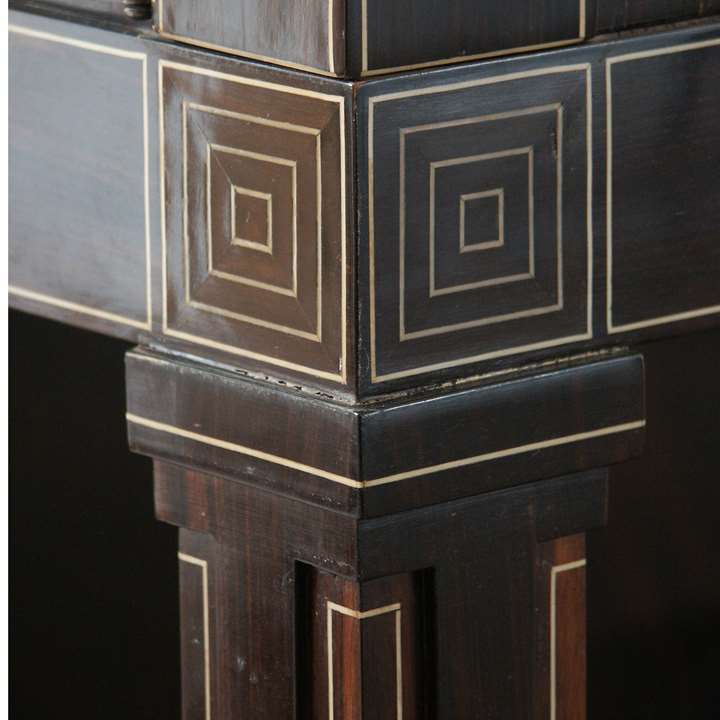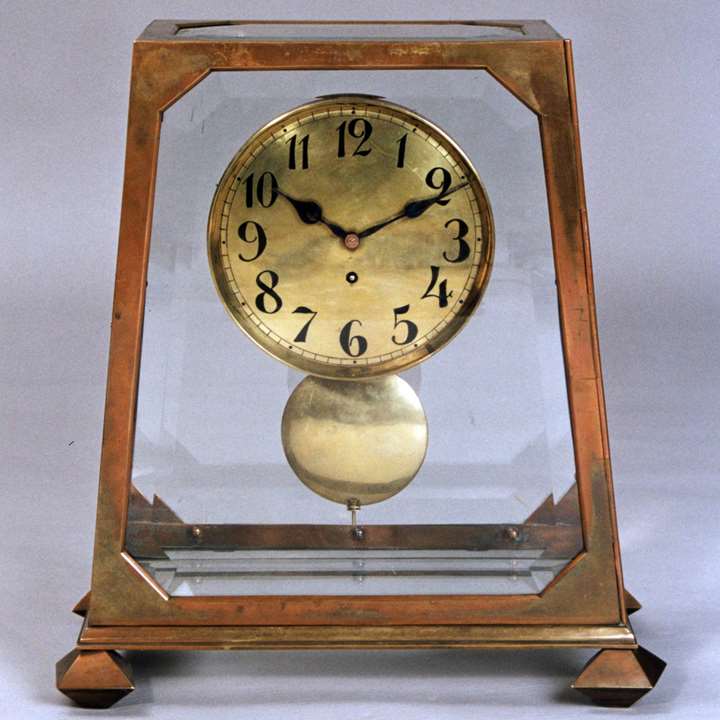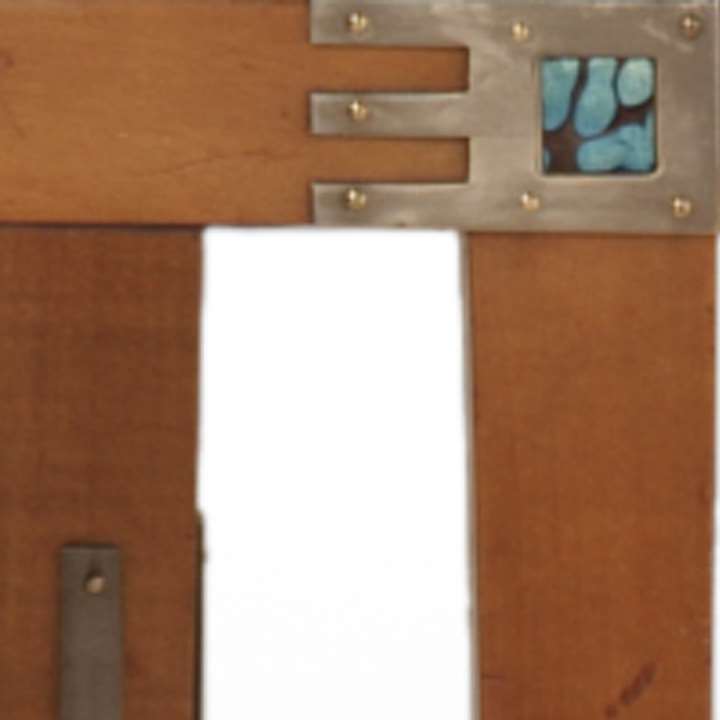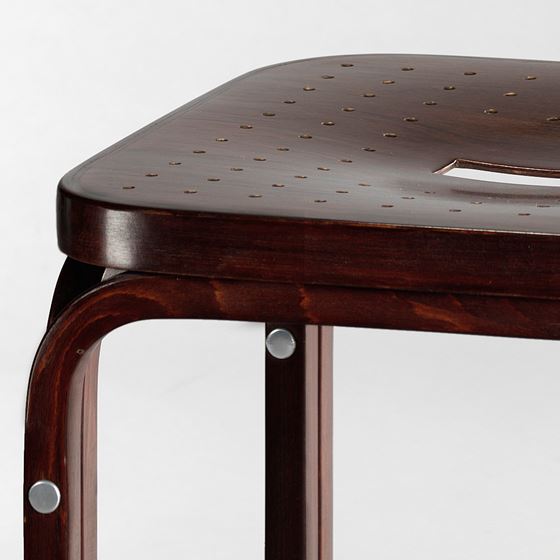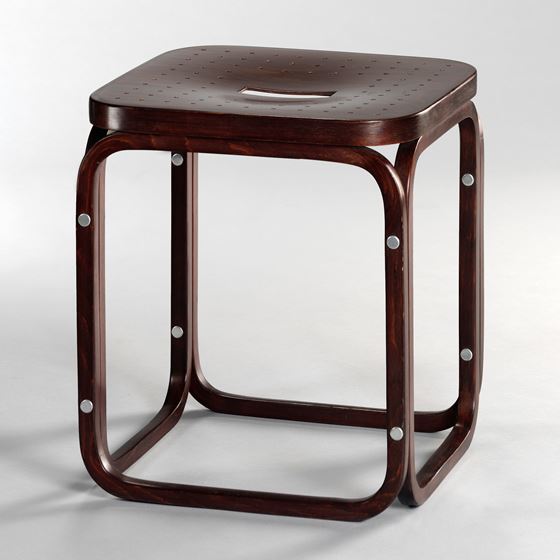Description & Technical information
Executed by Kohn or Thonet
Christian Witt-Doerring, curator at the Neue Galerie, NY, writes:
In 1906, the Gebrüder Thonet company delivered 64 stools and 28 étagères for the Austrian Post Office Savings Bank building. Apart from 4 étagères that are stained red mahogany and brass mounted, the remaining 24 étagères and all the stools are stained grey and have aluminium mounts. The type of execution indicates their original location in the Postsparkasse building. The prestigious combination of mahogany and brass was kept for the management, while the grey version was intended for the offices of the departmental heads. Otto Wagner chose the bent wood technique as a cost-effective production method and implemented it technically and aesthetically with consummate mastery. The stool consists of five frames of the same size all screwed together. Hence only one single bent form was needed. The seat consists of perforated, laminated wood with a rectangular grip slot in the middle. No unnecessary detail spoils the self-assuredness of the design. The only decorative concession is the aluminium covering of the screw heads, which still acts as a "psychological" aid in signalling the construction of the stool and emphasising what holds the whole thing together.
Wagner is exceedingly thrifty as well in the construction of the étagères. Two oblong bent-wood frames serve as uprights for eight long, squared wooden rods on which the four shelves rest. Two transverse oblong bent-wood frames are tensed between each of the uprights and serve per stage as support for the rods. The way Wagner finishes off the side bent-wood frames at the floor is particularly sophisticated. He does not create a continuous circuit, with four identical, right-angled bends, but uses the latter only at the upper end of the uprights. However, at the bottom end he does not stop bent-wood frame short, but locates its end at the front. In this way he accomplishes a visual reinforcement of the base zone, without having to give the piece of furniture its own base.
Date: 1904-06
Period: 20th century
Origin: Austria
Medium: Bent solid beechwood, Mouled laminated wood, Aluminium studs
Dimensions: 47 x 42 x 42 cm (18¹/₂ x 16¹/₂ x 16¹/₂ inches)
Categories: Furniture
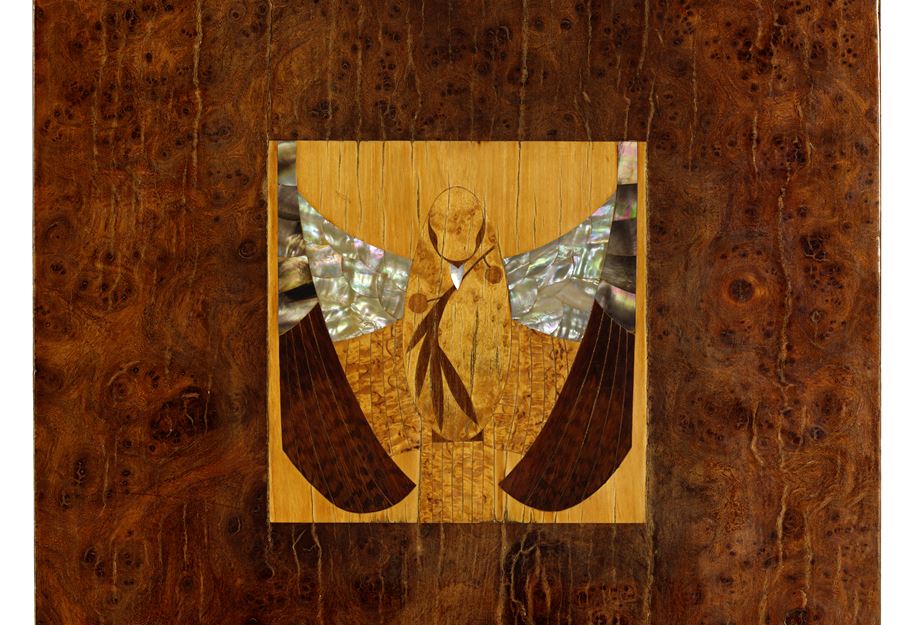
Discover the gallery
Yves Macaux
20th Century Decorative Art
More Works From This Gallery
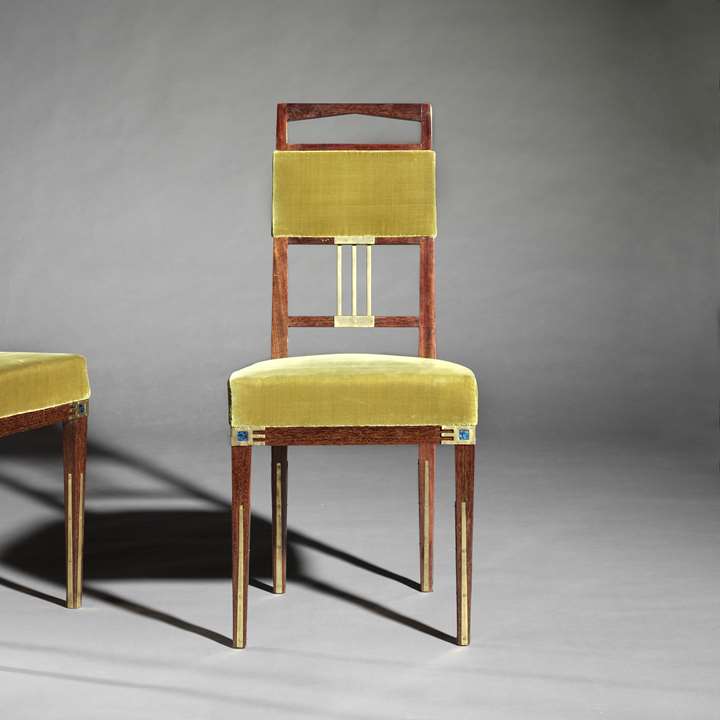
Yves Macaux
Pair of side chairs 'Saint-Saens'
Gustave Serrurier-Bovy
